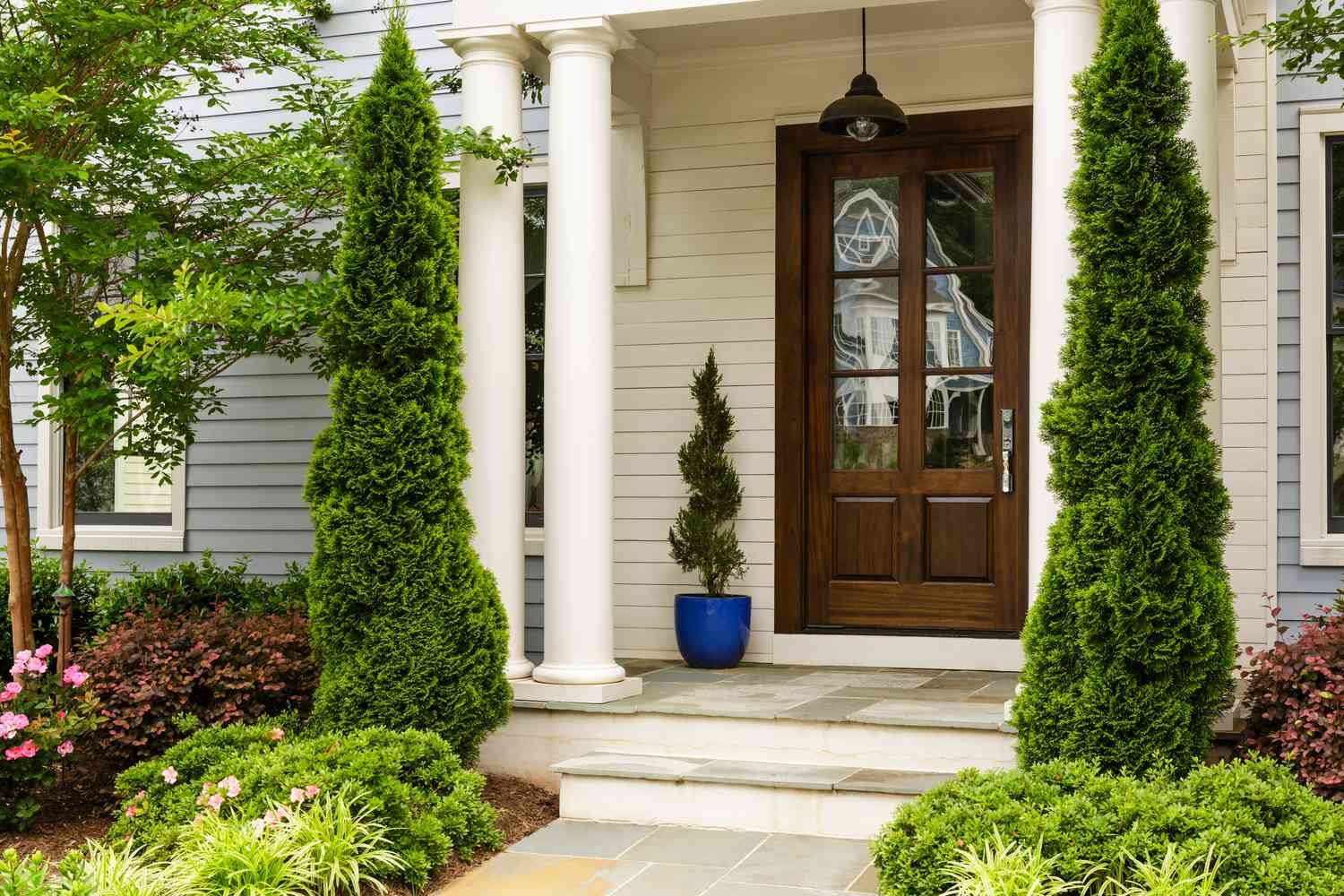8 Easy & Budget-Friendly Front Yard Landscaping Ideas That Transform Your Curb Appeal
Your front yard is the first thing people see when they visit your home—and whether you realize it or not, it speaks volumes. It sets the tone for what lies beyond the front door, creates a sense of welcome (or not), and can even affect your property’s value. A well-kept front yard shows pride of ownership, adds charm to your home, and can make a lasting impression on guests, neighbors, and potential buyers alike.
But let’s be honest—landscaping projects can get expensive fast. Hiring a professional designer, installing hardscapes, or completely redoing your lawn might sound ideal, but those upgrades often come with a hefty price tag. The good news? You don’t have to go that route to get a beautiful, head-turning front yard.
:strip_icc()/tan-house-landscaping-plants-733878e9-d20456ef84b14460ab7b78f46a7d694b.jpg)
With just a bit of creativity, some strategic planning, and a willingness to get your hands dirty, you can transform your outdoor space on a budget. Whether you’re working with a spacious lawn or a small patch of soil, there are plenty of simple, low-cost ideas that can make a big visual difference. From refreshing mulch beds and planting colorful perennials to adding pathway lighting and creating DIY walkways, even small tweaks can deliver powerful curb appeal.
In this guide, we’ll explore 8 easy and affordable front yard landscaping ideas that prove you don’t need a massive budget to make a major impact. These ideas are perfect for beginners, weekend warriors, or anyone looking to elevate their home’s exterior without overspending. Let’s dive in and give your front yard the glow-up it deserves.
1. Add a Fresh Layer of Mulch
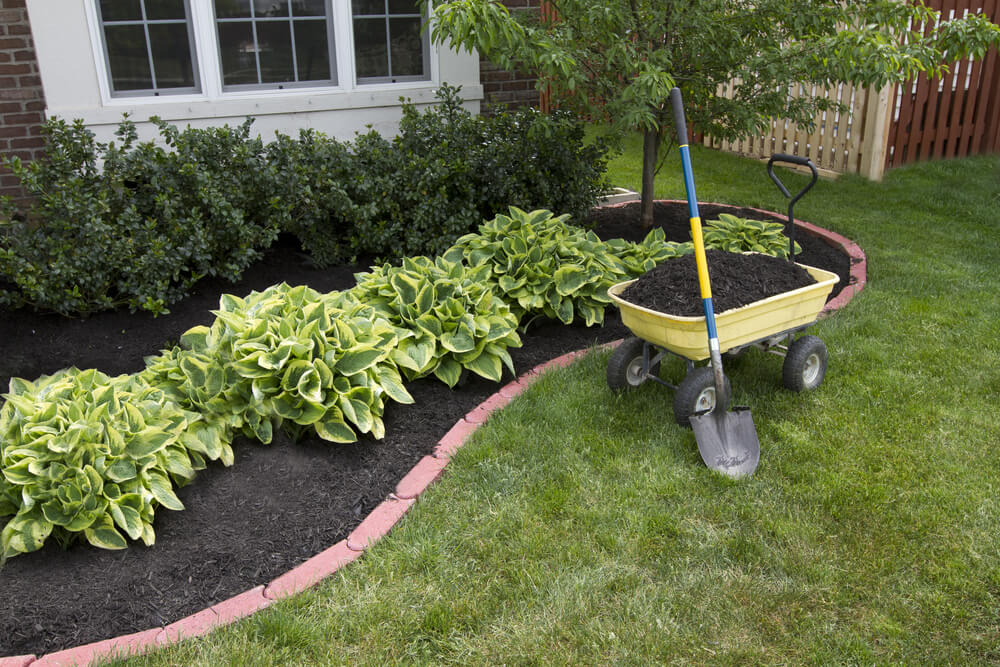
Mulch is one of the most cost-effective, beginner-friendly ways to give your front yard a quick facelift—and the results are almost instant. It not only improves the look of your garden beds, but also serves a practical purpose in supporting the health of your plants and soil.
Here’s why mulch is a must-have:
- Covers bare soil and suppresses weeds – A fresh layer of mulch hides unsightly dirt patches and helps block out sunlight, making it harder for weeds to grow.
- Retains moisture for your plants – Especially in warmer months, mulch slows down water evaporation, keeping your plants hydrated longer with less frequent watering.
- Provides insulation – It acts as a natural blanket, protecting plant roots from extreme temperature swings in both summer and winter.
- Comes in various colors and textures – Choose from earthy browns, striking blacks, or even red hues to complement your home’s exterior or existing landscape design.
You can usually find bagged mulch at home improvement stores and garden centers for as little as $3–$5 per bag, depending on the type (shredded bark, wood chips, rubber, or dyed mulch). A little goes a long way—just a few bags can cover your flower beds or garden borders.
Looking to save even more? Check with your local city or county’s waste management program. Many offer free mulch made from recycled yard trimmings and tree cuttings. It might not be fancy, but it’s just as effective and environmentally friendly.
For best results, apply mulch in a 2 to 4-inch thick layer around trees, shrubs, and flower beds. Be sure to keep mulch a few inches away from the base of plant stems and tree trunks to prevent rot and pest issues.
Whether you’re refreshing old beds or starting new ones, mulch is a low-effort, high-reward solution that adds polish, color, and function to your front yard—all without denting your budget.
2. Define Flower Beds with Edging
:strip_icc()/landscape-edging-3b7f9854-91808f67c1eb42008b9211210f214518.jpg)
If you’re looking for an easy and budget-friendly way to instantly boost your curb appeal, adding edging to your flower beds is a game changer. Even the most basic yard can look neat, intentional, and thoughtfully designed with the help of clean lines and defined spaces.
Edging helps you:
- Create visual separation between your lawn and garden beds
- Highlight your landscaping layout and make it feel more structured
- Prevent grass and weeds from creeping into your planting areas
- Make mowing and trimming easier by giving you a clear barrier to work around
You can use a variety of materials depending on your style and budget:
- Natural stone adds a rustic or elegant vibe, perfect for traditional homes
- Bricks or pavers offer a clean, timeless look and work well in both classic and modern yards
- Plastic or rubber edging is inexpensive, flexible, and easy to install—great for curves and tricky shapes
- Wooden landscape timbers give a cozy, cottage-style appearance and work well in informal gardens
Installing edging is a DIY-friendly project that can usually be completed in a weekend. Most edging products require minimal tools—just a shovel, a mallet, and a level—and can be laid flush with the ground or raised for extra definition. For curved flower beds, flexible edging materials like rubber or metal strips are ideal and allow for more creative shapes.
To install your edging:
- Outline your flower beds with garden hose or spray paint.
- Dig a shallow trench along the line, just deep enough to bury part of the edging.
- Place your edging in the trench, ensuring it sits evenly and follows your desired shape.
- Backfill the trench and tamp down the soil to hold the edging in place.
This simple upgrade may not seem dramatic at first, but once it’s done, you’ll be amazed at how much it elevates the look of your front yard. It creates instant order and makes your plantings stand out more vividly. And best of all, it’s a low-cost project that provides lasting results season after season.
3. Plant Perennials That Return Each Year
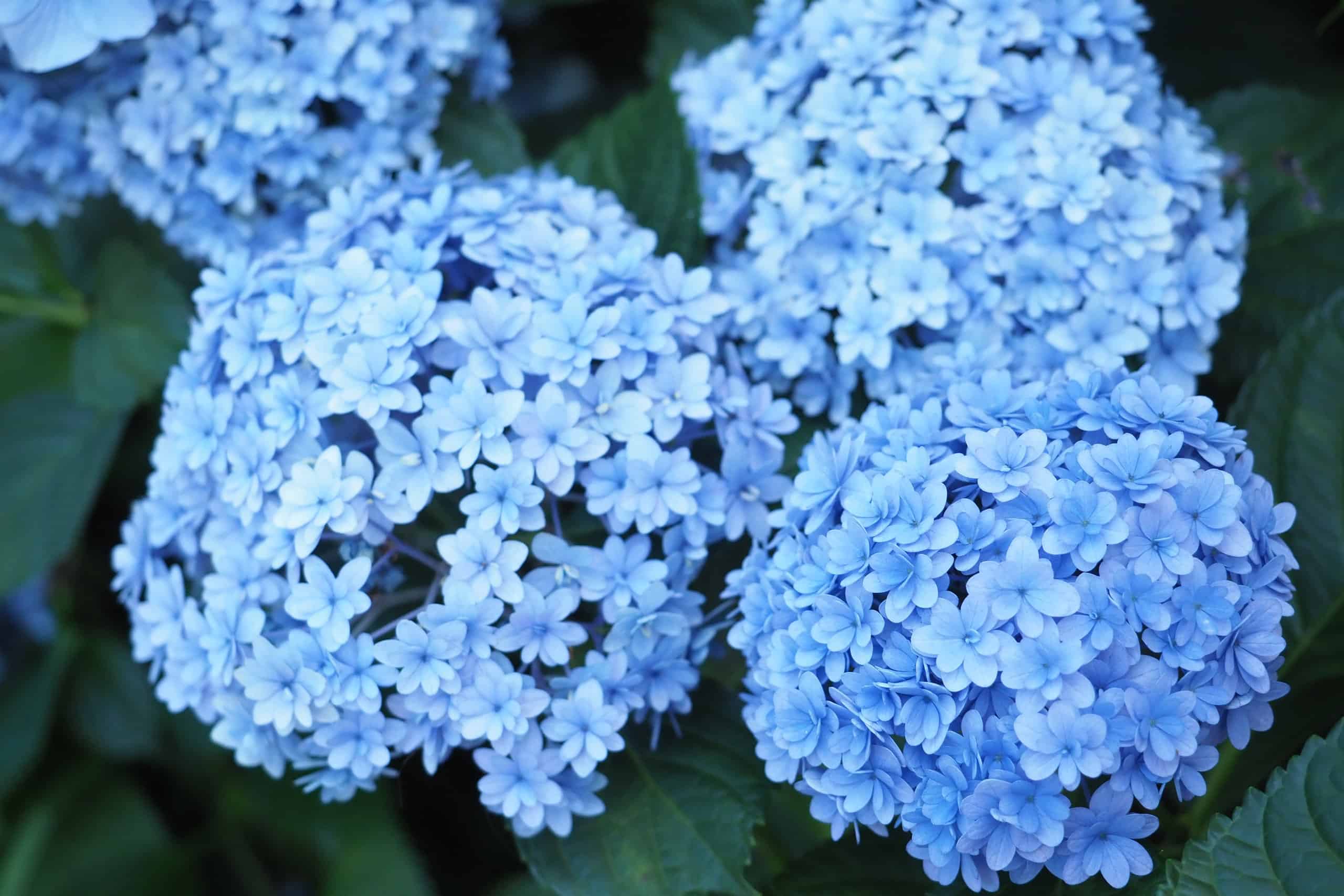
When it comes to getting the most bang for your buck in the garden, perennials are a smart and reliable choice. Unlike annuals—which need to be replanted each year—perennials come back season after season, making them a fantastic long-term investment for your front yard.
Here’s why they’re perfect for budget-friendly landscaping:
- They grow back every year, saving you the cost and effort of replanting each spring
- Many varieties spread naturally, filling in empty spaces over time and giving your yard a lush, full look
- They require less maintenance than many annuals once they’re established
- They bring consistent color, shape, and texture, helping to create a cohesive, polished landscape design
Whether you’re going for a vibrant, flower-filled look or something more minimalist and structured, there’s a perennial to suit every style. Some of the best low-maintenance and visually appealing choices include:
- Hostas – Great for shady spots, with attractive foliage and dozens of color variations
- Daylilies – Hardy, colorful, and incredibly forgiving—perfect for beginners
- Coneflowers (Echinacea) – Loved by pollinators and drought-tolerant once established
- Black-eyed Susans – Bright yellow blooms that pop against green backdrops and thrive in full sun
- Lavender – Offers beauty, fragrance, and even pest-repelling properties
- Salvia and Russian sage – Great for dry or hot areas, with spikes of purple or blue flowers
Plant perennials in clusters to make a stronger visual impact, and choose a mix of early-, mid-, and late-season bloomers so your yard always has something in flower throughout the growing season. Also, look for native plants—they tend to require less water, less fuss, and are better adapted to your local climate.
Pro tip: Visit local plant sales or garden swaps—especially in spring or fall—where you can often find mature perennials for a fraction of the cost of nursery plants. Better yet, ask neighbors if they’re dividing their overgrown beds. Most perennials can be split and shared!
With perennials, you’re not just planting flowers—you’re planting future savings, color, and growth. One weekend of digging can bring years of beauty, all without stretching your budget.
4. Create a DIY Walkway

Walkways do more than just connect spaces—they define your landscape and make your front yard feel intentional, balanced, and welcoming. A thoughtfully designed path naturally draws the eye, guiding visitors from the sidewalk to your front door or connecting key areas like your driveway, porch, and garden beds.
The best part? You don’t need professional help or expensive materials to build a beautiful, functional walkway. With a bit of planning, some basic tools, and a free weekend, you can craft a charming path that looks custom-made—but is entirely DIY.
Choose Materials That Fit Your Budget and Style
DIY walkways are highly customizable, and your choice of materials can reflect your home’s personality. Whether you’re going for a rustic, cottage-style look or something more modern and clean-lined, there’s an affordable option for every aesthetic:
- Gravel – One of the most cost-effective choices. It’s easy to spread and contours to curves and uneven terrain. Pair with edging to keep it tidy.
- Stepping stones – Great for informal or natural gardens. Space them apart and plant low-growing ground cover between for added charm.
- Reclaimed bricks – Durable and full of character. Look for salvaged bricks or pavers at architectural salvage yards or local classifieds.
- Concrete pavers or slabs – Sleek and modern, with a variety of shapes and sizes. Often available at home improvement stores for just a few dollars each.
- Flagstone or slate – A bit pricier, but perfect for an upscale or organic look. Their irregular shapes create a natural flow through the yard.
Simple Steps to Build Your Walkway
No fancy equipment needed. Just some patience, muscle, and a little creativity:
- Plan your path
Use garden hose, chalk, or string to lay out the route. Curved lines feel more natural, while straight lines give a structured, formal appearance. - Prepare the area
Remove grass and dig a trench about 2–4 inches deep along your path. The depth depends on the materials used. - Add a base layer
Pour in sand or crushed stone and tamp it down. This helps with leveling and drainage, preventing your walkway from shifting over time. - Lay the materials
Arrange your stones, bricks, or pavers in your chosen pattern. Use a rubber mallet to gently tap them into place and check for levelness.
5. Install Solar-Powered Path Lighting
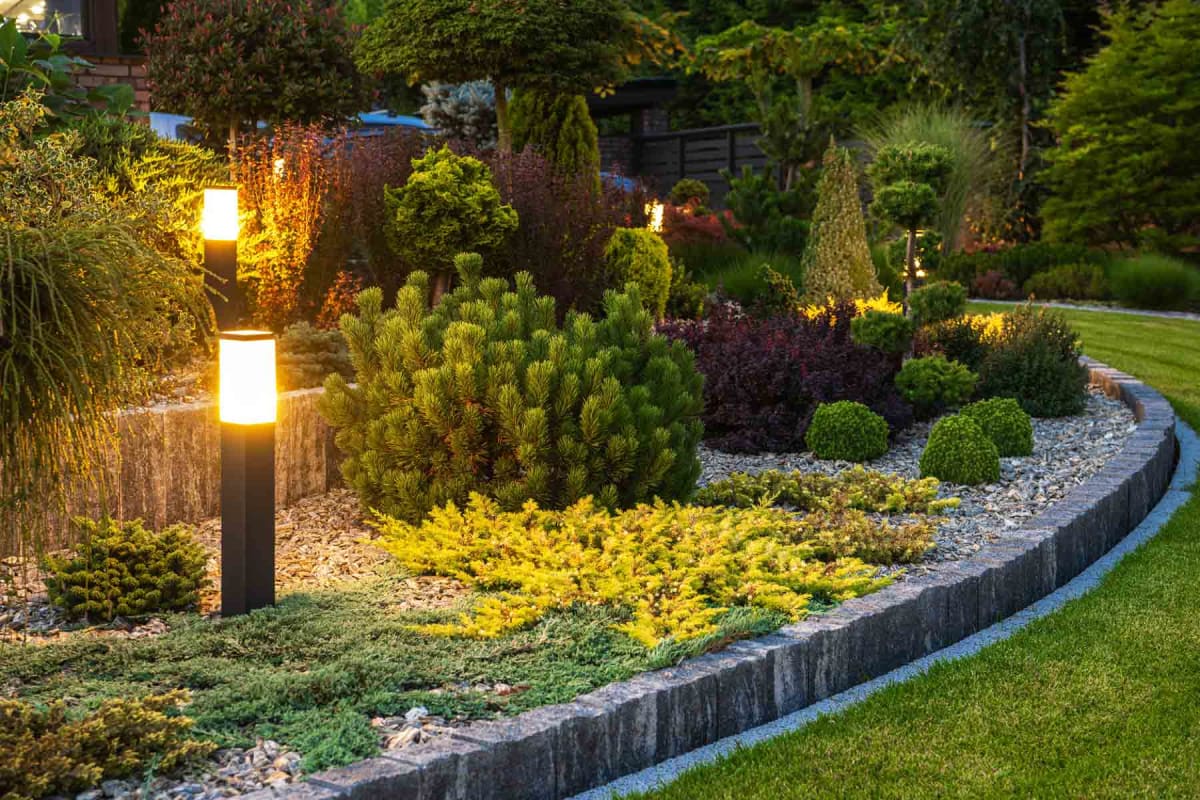
Lighting can completely transform the look and feel of your yard after sunset. It adds a layer of warmth, highlights your landscaping, and improves safety—all without complicated wiring or high energy bills.
Solar-powered lights are one of the easiest and most affordable ways to illuminate your front yard. They charge during the day using sunlight and automatically turn on at dusk, offering a soft glow throughout the evening.
Here’s why they’re a great budget-friendly upgrade:
- Easy to install – No tools, wiring, or electrical knowledge required. Just push them into the ground and let the sun do the rest.
- Energy-efficient – They run entirely on solar power, so they won’t add to your utility bill.
- Low maintenance – Most models are weather-resistant and designed to last for several seasons.
- Affordable – You can find multi-packs for under $30 at most home improvement or garden stores.
Place them along walkways, driveways, flower beds, or around the porch to create soft visual borders and improve nighttime visibility. You can also use them to highlight standout features—like a tree, shrub, or decorative garden element—for added depth and ambiance.
Bonus Tip: Look for solar lights with warm white or amber tones for a more natural, cozy glow that complements your home’s exterior.
In just one afternoon, you can turn a dark, overlooked yard into a welcoming, elegant space that feels just as inviting at night as it does during the day.
6. Incorporate Container Gardens
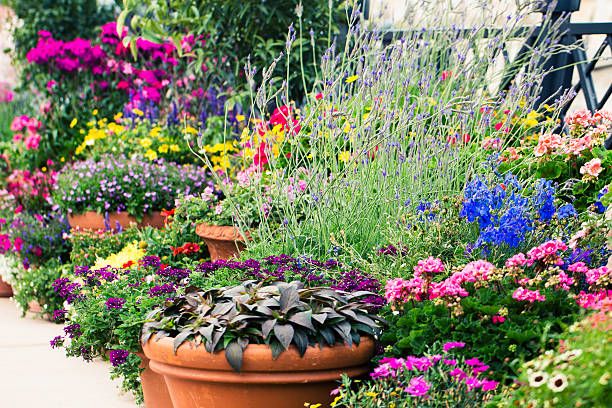
Container gardens are a perfect solution for renters, small front yards, or anyone looking for a low-commitment landscaping option that still makes a big impact. They offer the freedom to rearrange, refresh, and personalize your outdoor space without digging up your lawn or investing in permanent features.
You can use a wide variety of containers to match your home’s style and personality:
- Classic ceramic pots for a traditional, colorful look
- Wooden crates or wine boxes for rustic charm
- Repurposed items like galvanized tubs, buckets, or even old watering cans for a quirky, creative twist
Place containers near your front steps, entryway, or along a walkway to create focal points and visual interest. They’re ideal for framing your porch or softening the edges of hardscapes.
What to Plant in Containers?
One of the best things about container gardening is how versatile it is. You can plant:
- Bright flowers like petunias, marigolds, or geraniums for instant color
- Herbs like basil, thyme, or rosemary, which are attractive and useful
- Small shrubs or evergreens for year-round texture
- Trailing plants like ivy, sweet potato vine, or creeping jenny to cascade over the sides
Try mixing plant types by using the “thriller, filler, and spiller” method:
- A thriller (tall plant) for height and drama
- A filler (mid-size plant) to bulk out the center
- A spiller (trailing plant) to soften the edges
Easy to Maintain and Change Seasonally
Container gardens are not only easy to manage, but they also give you the freedom to change things up with the seasons. Swap out summer blooms for fall mums or winter evergreens to keep your entryway fresh and inviting year-round.
They also require less water and weeding than traditional flower beds and are easy to protect from pests or extreme weather by moving them as needed.
Whether your yard is large, small, or somewhere in between, container gardens let you experiment with color, texture, and layout—without any permanent commitment. They’re one of the easiest ways to add personality and life to your front yard, all while staying within budget.
7. Plant a Tree or Two
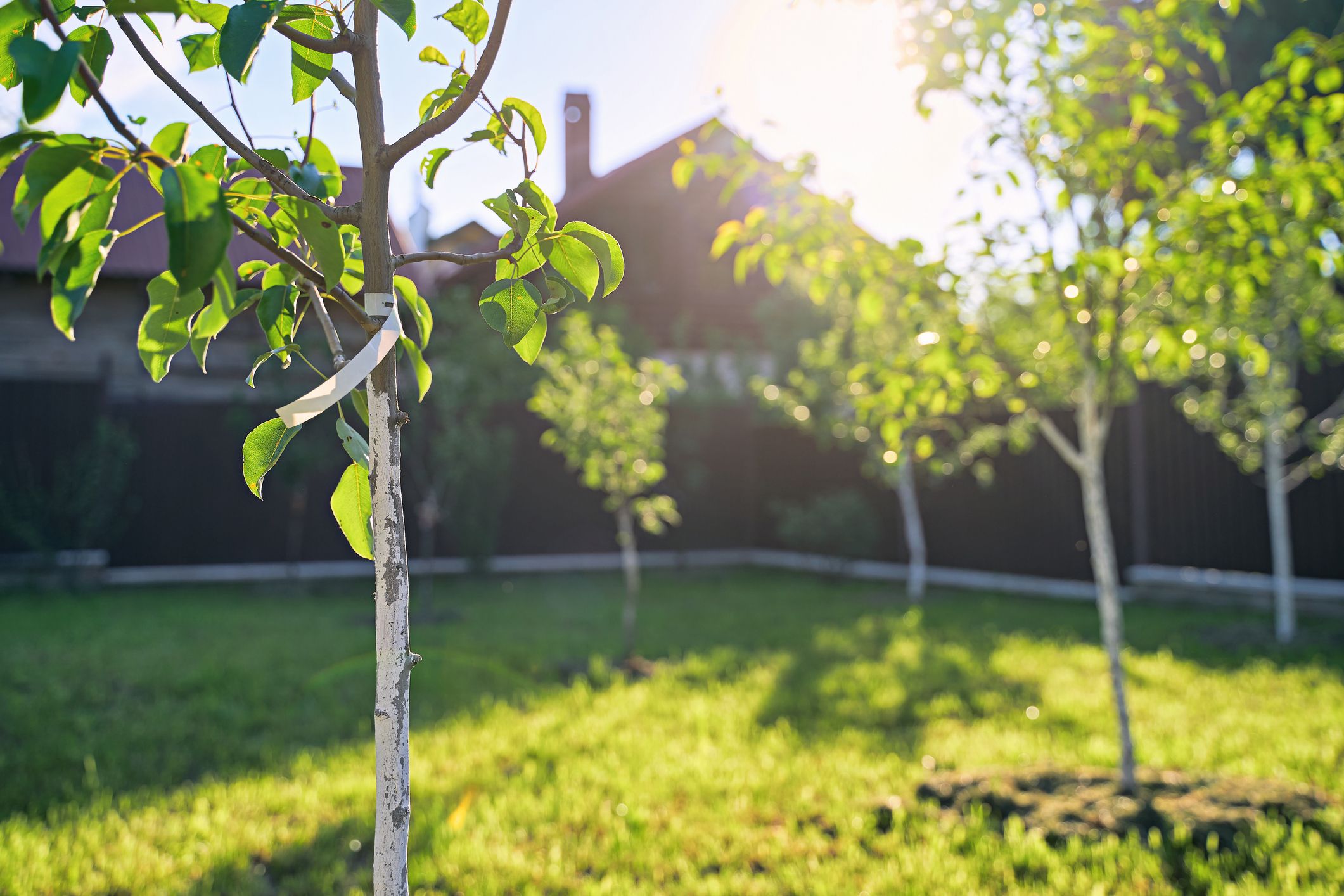
Few landscaping upgrades offer the same lasting impact as planting a tree. Whether your goal is to boost curb appeal, add shade, or create a more welcoming environment, trees are a wise investment that pays off year after year.
Why Trees Are a Game-Changer
- They provide natural shade, which can help cool your home and reduce energy bills.
- They add vertical interest and structure to your front yard, making the space feel balanced and complete.
- Their foliage, flowers, or vibrant fall colors enhance the visual appeal through all four seasons.
- They increase property value—in some cases, by as much as 10%—thanks to improved curb appeal and environmental benefits.
Best Budget-Friendly Tree Options
You don’t need to spend a fortune to add a tree or two. Many local nurseries and garden centers offer deep discounts on trees in spring and fall, especially as they rotate out seasonal stock. Some municipalities or non-profits even run free tree programs, so it’s worth checking locally.
Great options for small to medium front yards include:
- Redbuds – early spring blooms and heart-shaped leaves
- Dogwoods – showy flowers and striking branching patterns
- Japanese maples – elegant form and brilliant fall color
- Crape myrtles – long blooming period and smooth bark
- Serviceberry trees – edible berries, spring flowers, and stunning fall color
Placement Is Key
When planting a tree, think about how it will grow over time. Place it where it can offer shade to your windows or lawn without interfering with your home’s foundation or utility lines. A tree placed strategically near your entryway or driveway creates a natural focal point and a feeling of completeness in your landscape design.
Bonus: Invite Nature In
Beyond beauty and structure, trees bring life to your yard. Birds will nest in the branches, bees and butterflies will visit flowering varieties, and squirrels may make surprise appearances—all adding energy and charm to your outdoor space.
Planting a tree is a simple, affordable act that brings beauty, value, and life to your home. Plus, you’ll enjoy watching it grow and evolve over the years—making it one of the most rewarding additions to any front yard.
8. Refresh Your Lawn with Simple TLCc
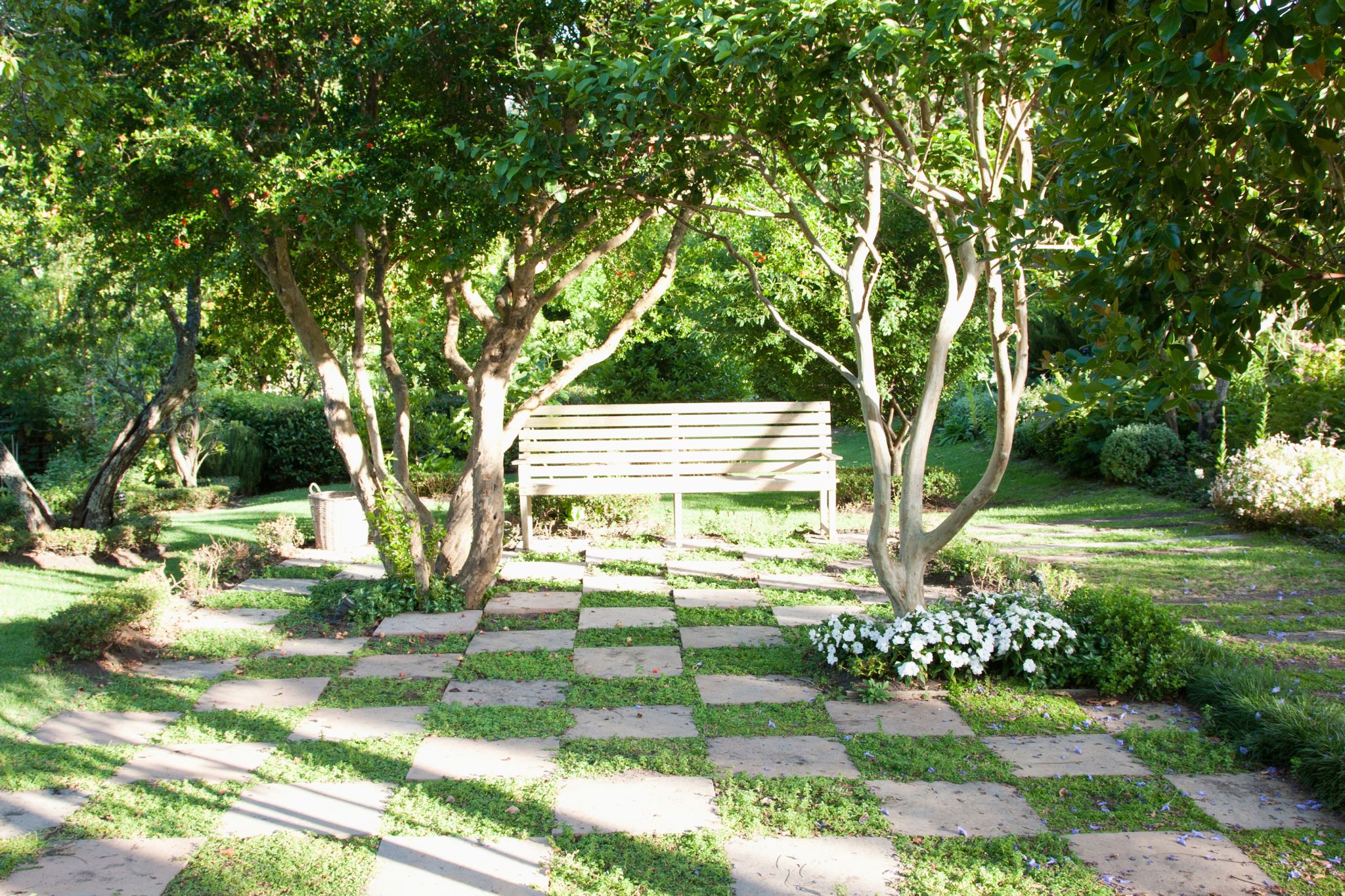
A lush, healthy-looking lawn is one of the simplest ways to boost curb appeal—but it doesn’t require a professional landscaper or expensive treatments. With just a few smart DIY steps, you can improve your grass and give your front yard a clean, cared-for appearance.
Easy, Low-Cost Lawn Care Tips That Make a Big Impact
- Aerate once or twice a year (spring or fall) to loosen compacted soil and allow air, water, and nutrients to reach the grass roots. You can rent an aerator or use a manual spike tool—either way, it’s worth the effort.
- Overseed thin or bare spots to encourage fresh, dense growth. Use a seed mix suited for your climate and yard conditions (shade, sun, high-traffic, etc.).
- Water deeply but less frequently—this encourages deeper root systems and more resilient grass. Aim for early morning watering a couple times a week instead of shallow, daily sprinkles.
- Mow high and often, keeping blades sharp. Taller grass shades soil and helps crowd out weeds, giving your lawn a thicker, healthier appearance.
- Edge along walkways and flower beds for a crisp, clean look with minimal effort.
It’s Okay If It’s Not Perfect
You don’t need a golf course-level lawn. Even a moderately healthy yard that’s neatly trimmed, weeded, and edged can dramatically improve your home’s exterior. Focus on consistency, not perfection.
A tidy lawn—paired with a few thoughtful landscaping upgrades—can completely transform your front yard and make your home feel more inviting, all without hiring a pro.
Here’s a clean and organized Table of Contents in table format based on your headings, perfect for an article titled “8 Easy & Budget-Friendly Front Yard Landscaping Ideas That Transform Your Curb Appeal”:
| Section | Description |
|---|---|
| 1. Choose Materials That Fit Your Budget and Style | Tips for selecting affordable mulch, edging, and other landscape materials that enhance visual appeal without overspending. |
| 2. Simple Steps to Build Your Walkway | A guide to creating charming DIY paths using gravel, pavers, or reclaimed materials—no concrete pouring needed. |
| 3. What to Plant in Containers? | Explore flexible and stylish container garden ideas that suit small spaces or rental homes. |
| 4. Easy to Maintain and Change Seasonally | How to refresh your front yard with low-maintenance flowers, perennials, and seasonal container swaps. |
| 5. Why Trees Are a Game-Changer | Understand how trees improve curb appeal, provide shade, and increase property value. |
| 6. Best Budget-Friendly Tree Options | A list of small, ornamental trees perfect for front yards—often available on seasonal discount. |
| 7. Placement Is Key | Smart tips for where to plant trees and shrubs to enhance structure, shade, and privacy. |
| 8. Bonus: Invite Nature In | Add bird-friendly plants, feeders, and pollinator-friendly blooms to bring life to your landscape. |
Let me know if you’d like this styled for a webpage or formatted in markdown!
FAQs: Front Yard Landscaping on a Budget
What’s the cheapest way to improve my front yard?
Start with mulching, edging, and tidying up your existing plants. These simple tasks can transform the space for under $50.
Can I landscape my front yard myself?
Absolutely! Most front yard landscaping tasks are beginner-friendly. Focus on projects that require basic tools and little maintenance.
What are low-maintenance plants for a front yard?
Great options include lavender, ornamental grasses, succulents, hostas, and boxwoods. These thrive with minimal watering and upkeep.
How do I make a small front yard look bigger?
Use vertical elements like trellises, narrow trees, or layered plant heights to draw the eye upward and create depth.
Conclusion: Make a Big Impact with a Small Budget
You don’t need a massive budget or fancy equipment to give your front yard a fresh, welcoming look. With some strategic choices—like layering mulch, planting perennials, or adding solar lights—you can boost your home’s curb appeal affordably and easily. Whether you have a tiny patch of grass or a spacious lawn, these budget-friendly ideas will make your front yard shine.
Would you like a printable checklist or a before/after plan template for these landscaping projects?

